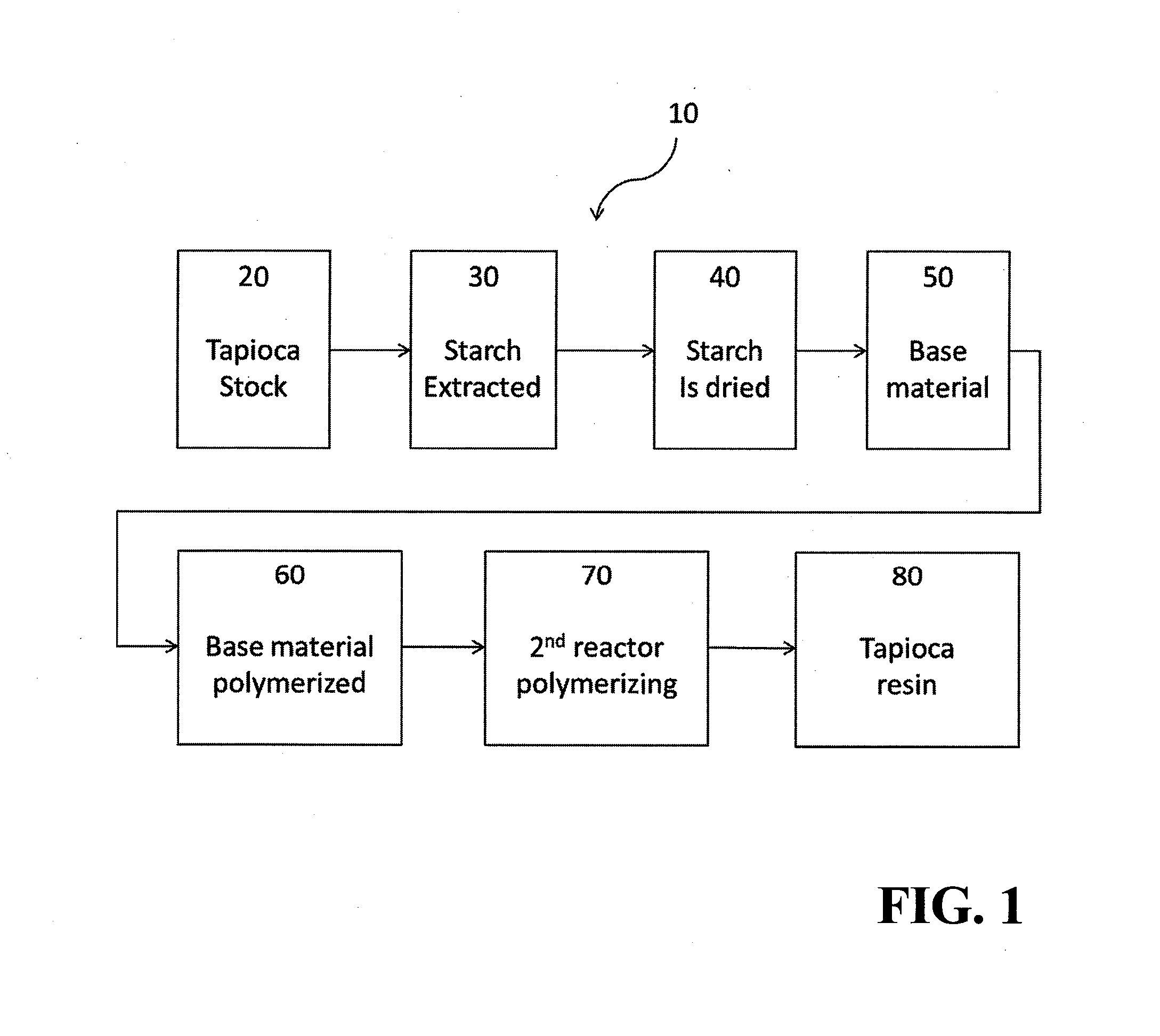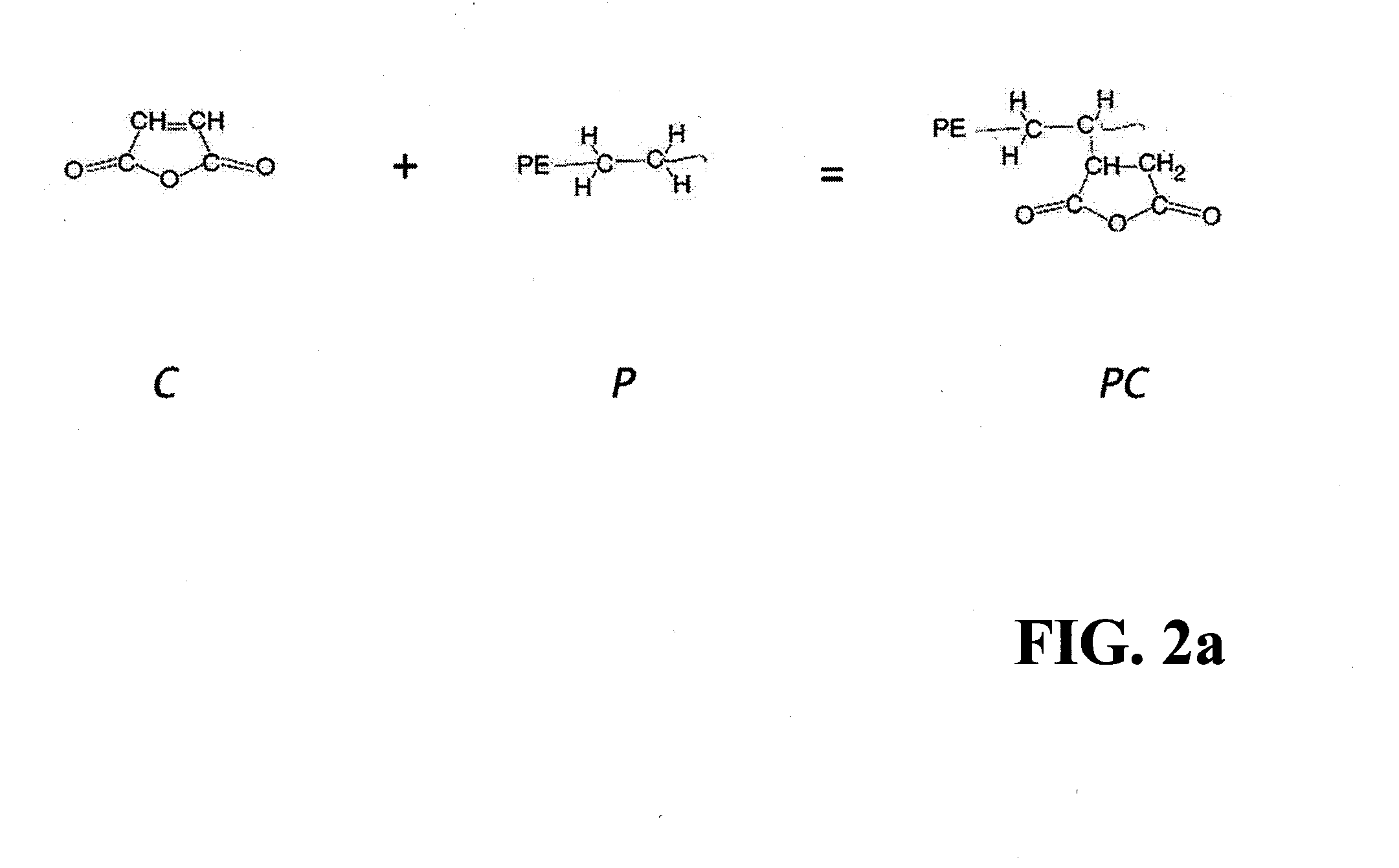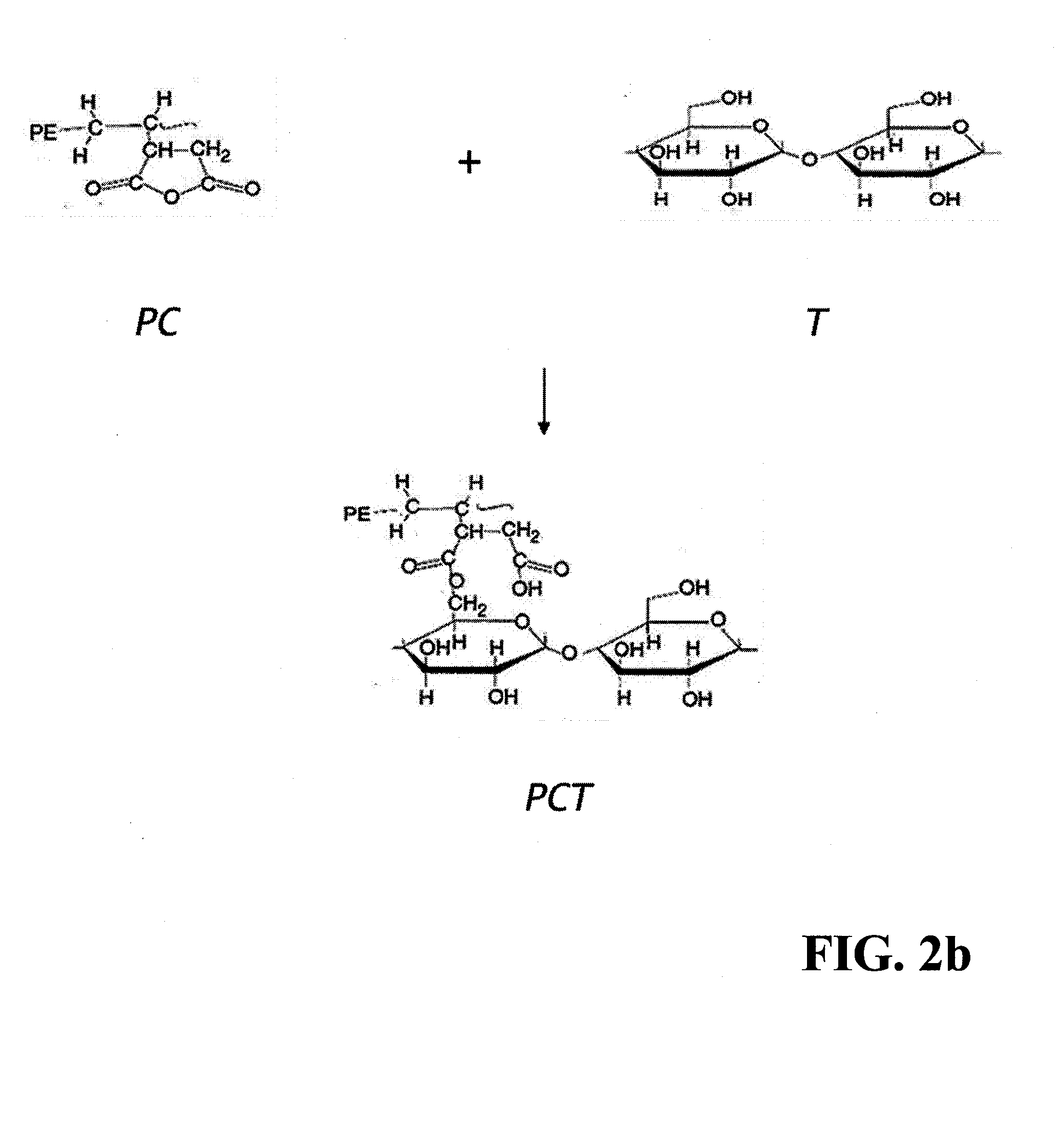However, over time it was deemed that solar degradability was not a satisfactory environmental answer in most applications and to the many suppliers and sellers and users of products made of
polyethylene.
Today a myriad of companies and states trying to address the emerging degradability issues with carry-out bags, retail packaging, and so on, have instituted various requirements and specifications for degradability, all of which include the use of starch-based resins in one form or another, and many of which are inadequate for addressing the real issue of degradability.
The
biggest problem with the Eco-Flex resins is that it is not made from a renewable base material.
Renewability is becoming an increasingly important issue environmentally and an important requirement in
consumer applications.
Another problem with the Eco-Flex process is that it is inherently more expensive to produce as it requires a number of additional stages of production.
The excessive stretch characteristics are generally undesirable in most plastics applications, thus, Eco-Flex materials are inappropriate for many, if not most plastic products.
Last, the softness of the film makes the material difficult to extrude in thinner gauges, for example 50 microns up to 120 microns, therefore thicker gauges require substantially more material, which greatly increases
raw material usage and cost.
It goes without saying that increased
raw material usage is counterproductive to improving its overall environmental
footprint.
The main problem with Braskem's
sugar-based
polyester, in addition to the fact it is not considered degradable, is that it is limited to a
raw material base of
sugar, which is not plentiful in most parts of the world.
Because of the requirement of these additional inputs for production, the product cannot claim to be made of
renewable materials per se.
In addition to the Braskem and Eco-Flex resins, common additives made from cornstarch create a myriad of problems.
A major problem with this process, unknown by many environmentalists, is that the extensive energy and water requirements are costly.
Likewise, this process produces significant amounts of waste materials such as bio-
mass of expended microbes that are wasted during production.
The typical manufacturing process of PHAs includes: 1) Production of farm corn crops using standard, high volume crops, which crops are dependent on
petroleum as raw material inputs in fertilizers and production machinery; 2)
Drying and delivery of corn crops to a processor; 3)
Grinding / milling, extraction of starches from the corn using substantial hot water solutions and complex, expensive, time-consuming purification methodologies; 4) Introduction of purified starches into
bioreactor vats and
inoculation with
yeast, potentially dangerous e-coli or other GMO microbes, thus growing the microbes to target densities; 5) Purifying the excreted base materials by removal of the bio-
mass and extraneous proteins, starches, plus a variety of other waste byproducts, and; 6)
Polymerization of excreted base materials to produce resin suitable for manufacturing.
Like PHA, it also requires substantial water supplies and
excessive energy in order to be produced.
In the film and bag making process, this equates to more costly
extrusion outputs, slower conversion times, three times the storage space, three-fold shipping costs and so on.
Generally speaking, all cornstarch plastics tend to cause additional problems and expenses when extruded.
This is primarily due to the fact that extruding a product three times thicker than a traditional
plastic film requires more energy.
The cornstarch based resin products are also more difficult to extrude with inferior bubble stability compared to traditional films.
Likewise, conversion of cornstarch plastics is a slower process with more down time on conversion equipment in order to change roll stock and replace sealing components such as Teflon covers where residue tends to build up more quickly than traditional plastics.
Thus, the overall end result with cornstarch-based plastic products is substantially higher costs, including energy to manufacture and ship.
The inherent cost of the product and its production processes has made
market acceptance very limited.
The minimum inputs in materials, energy for conversion through its various required stages of heat,
fermentation, purification, and
polymerization are costly, as is the infrastructure required to support it.
The overall cost therefore is inherently too high for adequate marketability and penetration.
Without question, the substantial increase in transportation, excess use of energy and water to convert and manufacture raise serious economic questions and new environmental questions altogether.
It is understandable that these methods are inadequate when addressing the true nature of environmentally sound plastics and their related products based on present costs, waste of energy, waste of precious water supplies, added transportation costs, the required use of petroleum products to produce and convert, let alone the questionable use of GMO microbes and their inherent waste.
 Login to View More
Login to View More 


